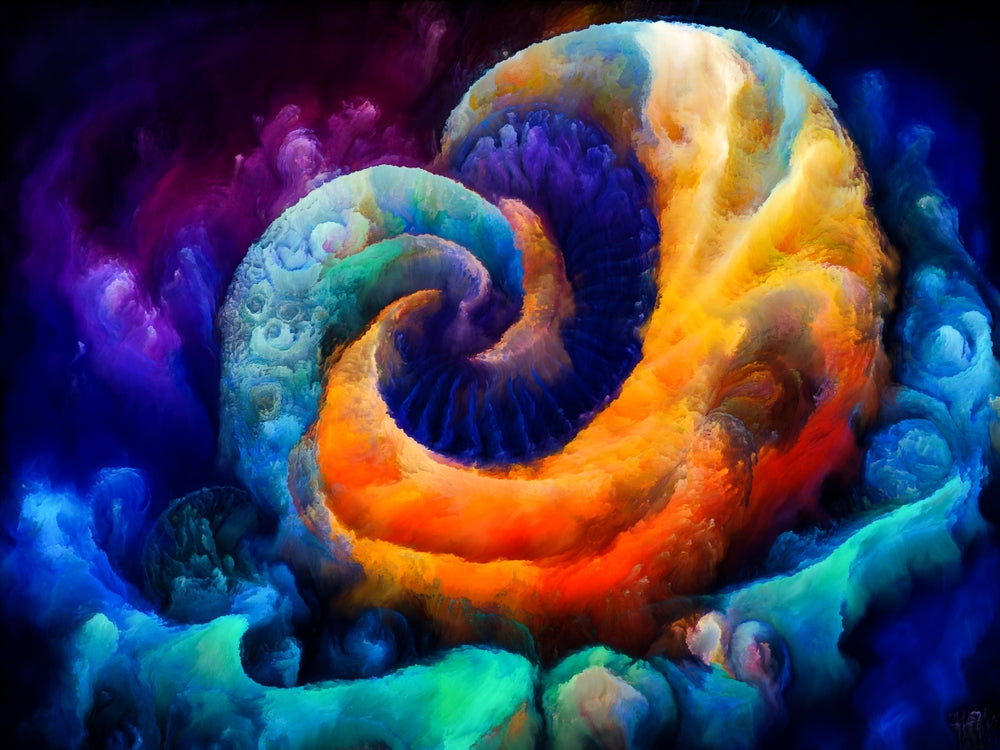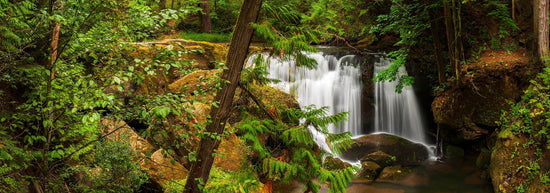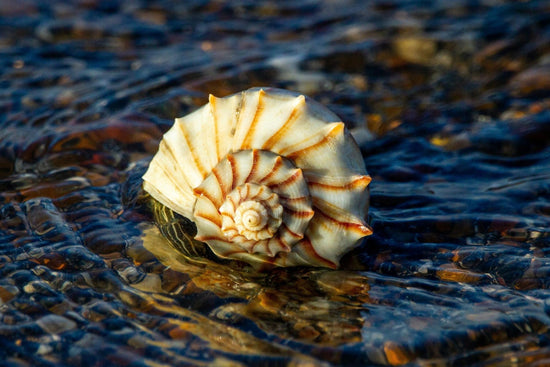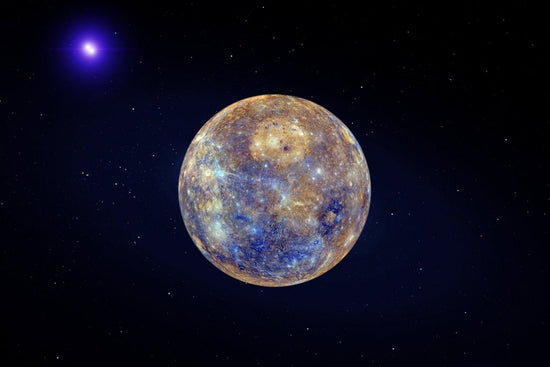Fire, earth, water, air, and aether. From Greek philosophy to Avatar: The Last Airbender, the elements are ancient phenomena that represent the building blocks used to create our universe. Their influence is so widespread that they’ve taken on instrumental roles in modern media and spirituality, shaping magic systems in fantastic universes, classifying groups of zodiac signs and tarot cards, and even lending their powers to witches and other magical practitioners.
At Sea Witch Botanicals, we’ve been inspired by the elemental forces of our universe from the very beginning. Each of our lovingly crafted creations receives an elemental association that we feel best suits its unique and unquantifiable properties. Today, we want to explore the elemental world with you all and dive deep into their history and associations, while sharing a few further resources for your own journey into the magic!
In this article:
The Classical Elemental System

Leibniz representation of universe resulting by combination of Aristotle four elements.
Much like the periodic table of elements, the classical elemental system was developed in an effort to understand our universe and the source of all things. Long before we knew about atoms, subatomic particles, and quarks—the smallest units of observable matter in the universe—scholars theorized there were four or five indivisible elements comprising all matter: fire, earth, water, and air, with some folks including aether, spirit, or quintessence as a fifth element. (In this article, we’ll usually call it aether.)
This particular system was fleshed out by Greek philosophers, notably including: Thales, who argued water was the basis of everything; Anaximenes, who argued air was the basis of everything; Hericlitus, who argued fire was the basis of everything; and Empedocles, who finally suggested each element was of equal importance in the creation of matter, and referred to this system as “the fourfold root of all things.”
Empedocles performed an easy experiment to prove his point by lighting fire to a stick. Because it could burn, the stick contained fire. Because smoke billowed from it, the stick contained air. Because moisture or residue bubbled from the burning wood, the stick contained water. Because ash collected from the wood once burnt, the stick contained earth. This experiment was meant to illustrate the interconnectedness of the elements and how they all come together to create other things.
Aristotle accepted this theory, even proposing the addition of aether as a fifth element (but we’ll get to that momentarily). He later described the qualities of each element. Fire was dry and hot; earth was dry and cold; water was wet and cold; and air was wet and hot. Earth was the heaviest, followed by water, air, and fire as the lightest. Fire and air moved upward (projecting) while water and earth moved downward (receptive). As the University of Bristol writes, “The concept of elements gave rise to one of the most fundamental theories of later alchemy: the idea that the properties of a substance depend on what it is made of.”
As the millenia went on, alchemists expanded the elemental system with additions of salt, sulfur, and mercury—a trinity used to conceptualize the body (salt), the soul (sulfur), and the spirit (mercury). By the time modern chemistry emerged in the 16th and 17th centuries, more and more chemical elements were being discovered. Before long, Aristotelian elements were rejected and a new elemental system was embraced: In 1869, the framework for the modern periodic table of elements was born.
The classical elemental system, however, lives on in public consciousness, appearing frequently in our stories, mythologies, and spiritual traditions. Aristotle’s primary elements are notably a major feature in many occult practices, from ceremonial magic and Wicca to modern traditional witchcraft.
Is Aether an Element?

There is quite a bit of debate about whether the fifth element is truly part of the classical elemental system. Whether you call it aether, void, spirit, akasha, quintessence, or simply energy, it can be challenging to find any solid definition for such an abstract element. Is it the space between the stars and the fabric of spacetime? Is it the substance from which a soul is made? Is it the force that brings us all to life?
In ancient Greece, Aether was a primordial god of light and a personification of the upper sky. Aether in these terms was also regarded by Plato as the purest form of air that only the gods could breathe.
In a similar vein, Aristotle considered aether to be the unchangeable material that made up the cosmos. It defied the qualities of the other “terrestrial” elements, having no weight or physical properties and being in constant, circular motion (e.g. the planets orbiting the sun).
Alchemists take quintessence to be “the divine and universal essence present in all matter,” as written by spagyric alchemists at Morningstar Medicinals. Through distillation, extractment, and refinement, the amount of quintessence in any material was thought to be able to be improved, and therefore made more pure. In theory, this would help to treat sickness and disease.
René Descartes and Isaac Newton used the word “aether” to discuss the material that makes up outer space; the forces of gravity and electromagnetism; even our sensory perception and mobility.
In modern witchcraft circles, particularly those influenced by Wicca, the element of aether wears the name “spirit” and is presented as the substance connecting all things. It is imperceptible, ubiquitous, and ever-present. Other practitioners might tap into this force simply under the term “energy.”
Ultimately, the question of whether or not aether is an element—as well as what it is in the first place—is entirely a subjective one. If it makes sense to you and works for your practice, take aether as an element. If the four primary elements suffice, leave aether out. We encourage you to experiment with these ideas and form your own theories as you go.
What is Elemental Magic?

Elemental magic or elemental witchcraft is a school of magic that draws on the power of the classical elements to carry out spells and magical workings. This can involve calling quarters as you cast a protective circle in which to perform your spell (primarily a Wiccan tradition) or (safely) using an element in its literal form as a tool in a ritual. It can also incorporate the essence of an element as it is found in herbs, crystals, days of the week, and more (see our correspondences section below).
To many elemental practitioners, the elements are not confined to their literal forms as flame, rock, water, or wind. Through an animist lens, each of these elements contains a life or spirit of their own. As such, you can commune or work with an element in the same way you can work with a deity or ancestor spirit. For example: In addition to taking a ritual bath or shower, you can also call on the spirit of water to assist you in cleansing a certain area of your life.
Some practitioners might work exclusively with elemental magic on its own, yet the elements are deeply integrated in a great deal of other schools of magic, such as green witchcraft, Wicca, modern traditional witchcraft, and ceremonial magic.
Wuxing: The Five Chinese Phases

Wu Xing, as illustrated by Parnassus - Own work, CC BY-SA 3.0
In this article, we delve into the classical elemental system as laid out by Greek philosophers around the 5th century BCE. We’d like to note that this system is distinctly different from wuxing (or wu-hsing), a Chinese system dating back to the 3rd century BCE that is frequently compared to the elements of the West.
The most important thing to recognize about wuxing is that it is not concerned with elements. Rather, wuxing names five phases or processes that have long been an integral part of Chinese medicine, cosmology, and philosophy. These five phases include: wood (mu); fire (huo); earth (tu); metal (jin); and water (shui). In this cycle, each phase gives rise to the next, has its own unique qualities, and is interconnected with the others. On these phases, the Internet Encyclopedia of Philosophy writes:
“…they are regarded as dynamic, interdependent modes or aspects of the universe’s ongoing existence and development. Although this fivefold scheme resembles ancient Greek discourse about the four elements, these Chinese “phases” are seen as ever-changing material forces, while the Greek elements typically are regarded as unchanging building blocks of matter.”
If you’re curious about this element-adjacent system, please peruse the article quoted above, or seek out the information available from folks native to Chinese culture. See our resource library at the end of this article for more.
The Elements and Their Correspondences
We know that matter is not literally composed of fire, earth, water, and air. Thanks to developments in chemistry, we know now that all things are composed of molecules, which, in turn, are composed of even smaller particles. However, the idea that the primary elements exist in all things persists in modern elemental magic.
The elements are associated with a host of deities, herbs, crystals, animals, colors, seasons, and other attributes. This helps not just to define the character of each element, but to understand how they are integrated into our world and what tools we can use to call upon their energies. Each is additionally ascribed a being called an elemental, which designates the physical form elemental spirits might take to enter our realm. Find a robust list of these correspondences below.
Fire

Fire is the element of the soul. It represents energy, willpower, vitality, and creativity. As an element in constant motion, fire means action and speed. When blocked or trapped, fire energy is easily frustrated, aggressive, and volatile; conversely, fire is extinguished without enough to eat or when overwhelmed by other elements. Balance or feed your fire by pursuing creative outlets, physical movement, sunbathing, or meditation (try candle gazing).
Symbol: 🜂
Physical representations: Candle flame, campfire or bonfire, wildfire, the sun, stars, volcanoes, lava, heat
Qualities: Hot and dry; projecting or masculine
Personality: Passionate, hopeful, willful, determined
Elemental being: Salamander
Colors: Reds, oranges, yellows, pinks
Cardinal direction: South
Place in the body: Digestive and muscular systems
Sense: Vision
Moon phase: Waxing moon, full moon
Season: Summer
Sabbats: Yule, Litha or Midsummer, and the Celtic fire festivals, including Imbolc (Imbolg), Beltane (Lá Bealtaine), Lammas (Lughnasadh), and Samhain (Samhuinn)
Time of day: Noon
Days of the week: Tuesday, Sunday
Planets: Mars, Jupiter, the Sun
Deities: Brigid, Belenus, Lugh (Celtic); Logi (Norse); Vesta, Hestia, Mars, Ares, Vulcan, Hephaestus, Sol, Helios, Prometheus (Greco-Roman); Ra, Sekhmet (Egyptian); Ogun, Oya, Shango (Yoruba); Xiuhtecuhtli (Aztec); Pele (Hawaiian); Agni (Hindu)
Zodiac signs: Aries, Leo, Sagittarius
Tarot cards: Suit of Wands
Herbs: Angelica, basil, bay leaf, cinnamon, frankincense, ginger, hibiscus, juniper, nettle, pepper, rosemary, witch hazel
Crystals: Fire agate, bloodstone, carnelian, citrine, garnet, jasper, lava stones, mookaite, fire opal, ruby, sunstone
Animals: Coyote, dragon, elephant, lion, lizard, phoenix, scorpion, snake, tiger
Magical associations: Banishing, cleansing, confidence, destruction, empowerment, evocation, joy, manifestation, momentum, passion, purification, rebirth, strength, transformation, vitality
Sea Witch associations: Quoth the Raven, our signature blend of orange, cinnamon, and clove. See our Fire elemental collection for other handcrafted, fire-aligned goods.
Earth

Earth is the element of the body. It represents fertility, growth, nourishment, and career. The earth element is the slowest moving and values a steady course. Weak or blocked earth energy feels shaky and scattered, sometimes manifesting as insecurity, overthinking, or malnourishment. Balance unstable earth energy with physical movement, time in nature (particularly barefoot or otherwise activating your sense of touch), nourishing foods, meditation, or grounding mindfulness practices.
Symbol: 🜃
Physical representations: Soil, rocks, crystals, mountains, caves, trees, crops (especially grains), fields, grasses, flowers, herbs
Qualities: Cold and dry; receptive or feminine
Personality: Grounding, nurturing, practical, resilient, creative, steady, strong
Elemental being: Gnome, giant, dwarf, or troll
Colors: Browns, greens, oranges, earthy yellows, earthy reds, black
Cardinal direction: North
Place in the body: Skeletal and muscular systems, skin, lower back, legs, and feet
Sense: Touch
Moon phase: New or dark moon
Season: Winter
Sabbats: Imbolc, Ostara, Lammas (Lughnasadh), Mabon
Time of day: Midnight
Day of the week: Saturday
Planets: Earth, Venus, Saturn
Deities: Danu (Celtic); Fjörgyn or Jord (Norse); Gaia, Terra, Demeter, Ceres, Rhea (Greco-Roman); Geb (Egyptian); Babalú-Ayé (Yoruba); Tlaltecuhtli (Aztec); Papahānaumoku (Hawaiian); Bhumi, Dharā, Prithvi (Hindu)
Zodiac signs: Taurus, Virgo, Capricorn
Tarot cards: Suit of Pentacles
Herbs: Amaranth, barley, buckthorn, grains, mugwort, oak, oats, patchouli, pines, sage, vetiver, vervain, wheat
Crystals: Agate (particularly moss or tree agate), emerald, geodes, hematite, jet, malachite, obsidian, onyx, peridot, quartz, salt, tourmaline
Animals: Bear, bison, bull, cow, deer/elk (especially stag), fox, horse, moose, rabbit, snake, spider, wolf; burrowing animals; animals with horns and hooves
Magical associations: Abundance, career, fertility, gardening, grounding, growth, healing, health, luck, nourishment, peace, prosperity, protection, self-connection, stillness, wisdom
Sea Witch associations: Hermitage, our signature blend of lavender, citrus, and patchouli. See our Earth elemental collection for other handcrafted, earth-aligned goods.
Water

Water is the element of the heart. It represents emotion, intuition, deep consciousness, and relationships. Water courses in perpetual motion, connecting strongly with the moon. Dysregulated water energy can manifest as fear and self-doubt, extremely high or low emotional tides, spaciness, detachment, rumination on the past, or a generally lackluster, out-of-touch feeling. Activate or balance water energy by swimming or bathing, expressing your emotions, hydrating, journaling, cleansing, daydreaming, or practicing mindfulness.
Symbol: 🜄
Physical representations: Seas, oceans, rivers, lakes, ponds, waterfalls, springs, wells, mist, clouds, rain, snow, hail
Qualities: Cold and wet; receptive or feminine
Personality: Fluid, forgiving, healing, intense, deep, mystical, purifying, soothing
Elemental being: Undine, mermaid, nereid, or nymph
Colors: Blues, bluegreens, purples
Cardinal direction: West
Place in the body: Heart, circulatory system, womb/reproductive system
Sense: Taste
Moon phase: Full moon, waning moon
Season: Autumn
Sabbats: Beltane (Lá Bealtaine), Mabon, Samhain, Yule
Time of day: Dusk, evening
Day of the week: Monday
Planets: Neptune, Venus, the Moon
Deities: Manannán mac Lir (Irish); Njord (Norse); Poseidon, Neptune, Oceanus (Greco-Roman); Tefnut (Egyptian); Oshun, Olokun, Yemoja or Yemayá, Ọya (Yoruba); Chalchiuhtlicue (Aztec); Kanaloa, Nāmaka (Hawaiian); Varuna (Hindu)
Zodiac signs: Pisces, Cancer, Scorpio
Tarot cards: Suit of Cups
Herbs: Aloe, apple, chamomile, gardenia, jasmine, lemon, lilac, lotus, magnolia, rose, thyme, willow, yarrow
Crystals: Amethyst, aquamarine, carnelian, chrysocolla, coral, lapis lazuli, moonstone, opal, pearl, rose quartz, sodalite
Animals: Albatross, crab, dolphin, fish, frog, salmon, seal, shark, starfish, swan, turtle, water snakes, whales
Magical associations: Cleansing, dreams, intuition, love, psychic powers, purification, relationships, scrying
Sea Witch associations: White Lodge, our signature blend of cedarwood and fir. See our Water elemental collection for other handcrafted, water-aligned goods.
Air

Air is the element of the mind. It represents knowledge, intellect, communication, and imagination. Crackling with electrical energy, the element of air moves as swiftly as thought. Like thought, however, air energy can become erratic, restless, and compulsive in overabundance. When scarce, its energy is awkward and uninspired, offering limited perspective. Balance air energy blockages by writing or speaking, meditating, deep breathing, burning incense, reading or learning, hiking, or singing.
Symbol: 🜁
Physical representations: Wind, the sky, clouds, lightning/electricity, storms, smoke, feathers, aromas, soundwaves
Qualities: Hot and wet; projecting or masculine
Personality: Dextrous, discerning, fresh, logical, persuasive, swift, versatile
Elemental being: Sylph or sylphid (air spirit)
Colors: Yellows, pale pinks and oranges, sky or light blue, grey, silver, gold
Cardinal direction: East
Place in the body: Mind, respiratory system, eyes, ears, nose
Sense: Smell, hearing
Moon phase: New moon, waxing moon
Season: Spring
Time of day: Dawn, morning
Day of the week: Wednesday
Planets: Mercury, Uranus
Deities: Borrum (Celtic); Thor, Týr, Odin, Váli (Norse); Zeus, Jupiter, Aeolus, the Anemoi or Venti wind gods (including Boreas to the north, Eurus to the east, Notus to the south, and Zephyrus to the west), Ouranos or Uranus, Caelus (Greco-Roman); Nut, Horus, Shu, Seth (Egyptian); Ọlọrun, Ọya, Shango (Yoruba); Ehecatl, Tezcatlipoca, Tláloc (Aztec); Kāne, Pakaʻa (Hawaiian); Vāyu, Varuna, Indra (Hindu)
Zodiac signs: Gemini, Libra, Aquarius
Tarot cards: Suit of Swords
Herbs: Clover, dandelion, dill, frankincense, lavender, lemon balm, meadowsweet, mint, sage, slippery elm
Crystals: Aventurine, chalcedony, fluorite, lepidolite, turquoise, clear quartz, topaz
Animals: Bat, bee, butterfly, crow, dove, dragonfly, eagle, hawk, moth, raven, vulture
Magical associations: Cleansing, communication, divination, focus, visualization
Sea Witch associations: Herbal Renewal, our signature blend of lavender and rosemary. See the Air elemental collection for other handcrafted, air-aligned goods.
Aether, Spirit, or Quintessence

Aether is the element of the universe. It represents the inner space, the cosmos, cycles of life (and death), and the interconnectivity of all things. Aether transcends many of the correspondences of the four primary elements. It is in perpetual, circular motion and is present in all things across time and space. Blocked aether energy comes with feelings of confusion, directionlessness, and disconnection from the self, community, or meaningful work. Balance aether energy by practicing mindfulness, journaling or making art, listening to music, spending time with nature, nourishing your passions, or seeking supportive community.
Symbol: 🟌, ○, or 🜀
Qualities: Universal, circular, cyclical, liminal
Elemental being: Dragon, phoenix, water serpent, unicorn
Colors: Black, white, purples
Cardinal direction: Universal
Place in the body: Spirit, soul, or consciousness
Sense: Intuition
Sabbats: All, especially those when the veil between worlds grows thin, including Samhain and Beltane (Lá Bealtaine)
Deities: Dagda, Morrígan, Danu, Cernunnos (Celtic); Odin, Hel (Norse); Aether, Chaos, Gaia, Ouranos or Uranus, Hades, Pluto (Greco-Roman); Atum or Ra, Osiris, Anubis (Egyptian); Ọlọrun or Eleduwa, Oya, Iku (Yoruba); Huitzilopochtli, Ometecuhtli, Mictlantecuhtli, Xolotl (Aztec); Kāne, Milu (Hawaiian); Akasha, Brahma, Yama (Hindu)
Tarot cards: Major arcana
Herbs: Angelica, artemisia plants (especially mugwort), basil or holy basil, chamomile, frankincense, hibiscus, juniper, lotus, mistletoe, myrrh, rosemary, garden sage or clary sage, vervain, witch hazel
Crystals: Amethyst, arfvedsonite, auralite 23, labradorite, lapis lazuli, moldavite, moonstone, phenacite, clear quartz, aura quartz, spirit quartz, ruby zoisite, selenite, shungite, sunstone
Animals: Dove, eagle, hawk, snake, spider
Magical associations: Divination, astral travel, meditation, energy work, dreams, spirit communication, connection, guidance, wisdom, insight, clarity, life path, manifestation
Sea Witch associations: Green Fairy, our signature star anise aroma. See the Aether elemental collection for other handcrafted, aether-aligned goods.
Resource Library for Learning More
Books & TV
The Four Elements of the Wise by Ivo Dominiguez, Jr.
The Anatomy of the Witch by Laura Tempest Zakroff
Elemental Witchcraft: A Guide to Living a Magickal Life Through the Elements by Heron Michelle
Earth, Air, Fire & Water by Scott Cunningham
Psychic Witch by Mat Auryn
Avatar: The Last Airbender series by Michael Dante DiMartino and Bryan Konietzko
Dragon Prince series by Aaron Ehasz and Justin Richmond
Podcasts & Videos
3 Pagans and a Cat’s elements series (episodes 90 & 182-187)
"Elemental Magick" (parts one and two) by The Norse Witch
"Elemental Magic for Beginners" by The Peculiar Brunette
"What Is Elemental Magick? | Occult 101" by Da’at Darling
Wuxing
Wuxing (Wu-hsing) by the Internet Encyclopedia of Philosophy
Experience Life Transformation podcast by Dr & Master Sha
Wu Xing: The Five Elements in Chinese Classical Texts by Elisabeth Rochat de La Vallée
3 Pagans and a Cat episode 187, “Elements: Wuxing”
Related Blogs from Sea Witch Botanicals
Green Witchcraft, Explained: A Beginner’s Guide
A Green Witch’s Encyclopedia of Herbs
Tarot, Explained: A Complete Guide to the Cards
A Guide to Moon Phase Meanings
The Wheel of the Year, Explained
Inspired by the Elements: Aromas from Sea Witch Botanicals
Sea Witch Classics: The Original Elementals
Shop By Element: The Elemental Collections





